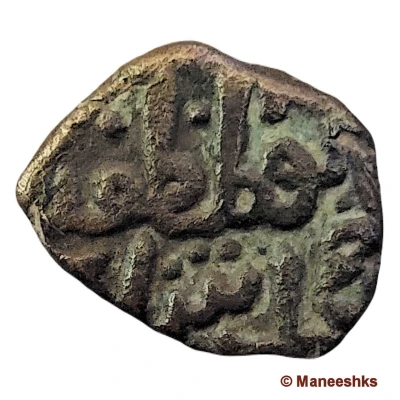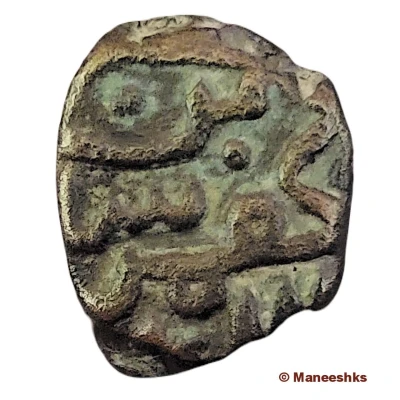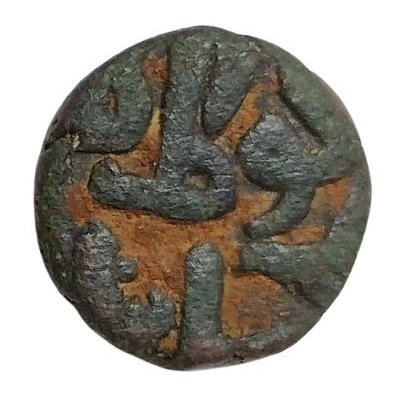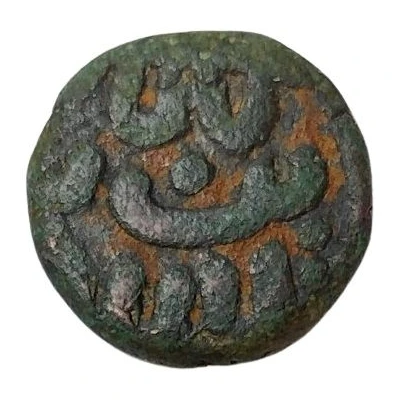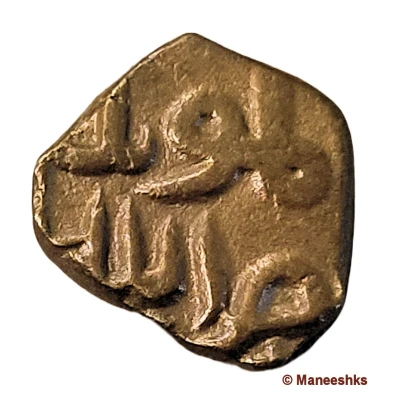
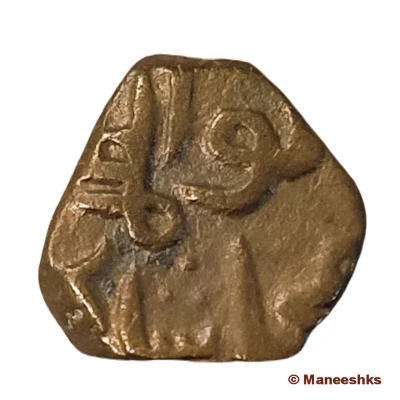

© Maneeshks (CC BY-NC)
Falus - Muhammad Shah I ND
| Copper | 3.4 g | 16 mm |
| Issuer | Sultanate of Bahmani (Indian Sultanates) |
|---|---|
| Sultan | Muhammad I (1358-1375) |
| Type | Standard circulation coin |
| Years | 1358-1375 |
| Value | 1 Falus (1⁄48) |
| Currency | Tanka (1347-1518) |
| Composition | Copper |
| Weight | 3.4 g |
| Diameter | 16 mm |
| Thickness | 3.25 mm |
| Shape | Round (irregular) |
| Technique | Hammered (Weight varies 3.3-3.5g) |
| Demonetized | Yes |
| Updated | 2024-10-05 |
| Numista | N#189504 |
|---|---|
| Rarity index | 92% |
Reverse
Abu'l muzaffar muhammad shah
Script: Arabic
Edge
Plain
Comment
CoinageThe coins of Muhammad Shah I depart from the Dehli prototypes and the style becomes specifically Bahmanid. Copper coins are of 4 types ranging in weight from 1.3g to 3.6g and in denomination from Falus to Half Falus.
History
A revolt by a group of Muslim nobles against Muḥammad ibn Tughluq that began in Daulatabad in 1345 culminated in the foundation of the Bahmani sultanate by Ḥasan Gaṅgū, who ascended the throne of Daulatabad as ʿAlāʾ al-Dīn Bahman Shah in 1347 and soon moved his capital to the more centrally located Gulbarga on the Deccan plateau.
Much of the political and military history of the Bahmanī sultanate can be described as a generally effective attempt to gain control of the Deccan and a less successful effort to expand outward from it. The initial period of consolidation was followed by a much longer period of intermittent warfare against Malwa and Gujarat in the north, Orissa and the Reddi kingdoms of Andhra in the east, and Vijayanagar in the south.
Interesting fact
The Falus coin of Muhammad Shah I from the Sultanate of Bahmani is interesting because it was issued during a time of significant cultural and artistic achievements in the region. The Bahmani Sultanate was known for its patronage of the arts, and this coin reflects the influence of Islamic art and architecture on the region's numismatics. The coin's design features intricate calligraphy and geometric patterns, which were hallmarks of Islamic art during that period. Additionally, the use of copper as the material for the coin was a common practice in the region at the time, and it highlights the importance of trade and commerce in the Sultanate's economy.
